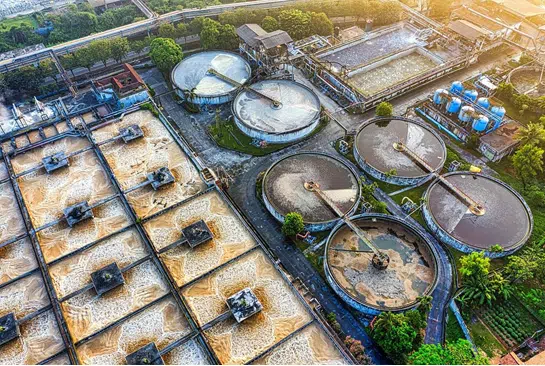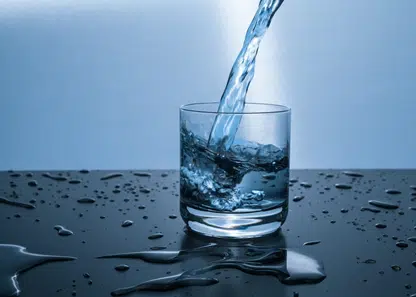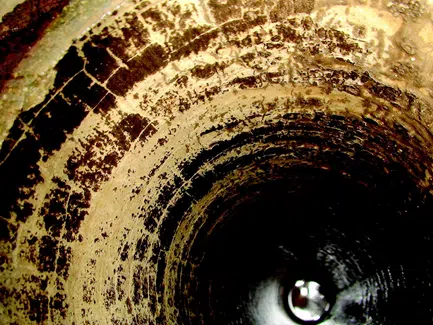Advancements in Water and Wastewater Treatment Processes: What You Need to Know!

Water and wastewater treatment plants have important technology to make sure our water supply is safe for humans and the environment. Without the use of advanced technical solutions, you can run into major issues like water shortages or even dangerous water pollutants affecting the water supply!
In this blog, we will discuss how water and wastewater treatment plants operate, as well as technical systems like pumping stations, control systems, and lift stations. You’ll also discover how these treatment processes play a crucial role in making facilities run in a safe and effective way.
How Does The Water Treatment Process Work?
The Water treatment process is important for everyone’s access to safe and clean drinking water. Not only that, but it removes harmful pollutants from wastewater before being discharged into the environment.
The following are the most common steps in treatment processes:
- Coagulation and Flocculation: Chemicals are added to the water to coagulate small particles, making them easier to remove.
- Sedimentation: The water is left to sit so that suspended solids can settle to the bottom.
- Filtration: The water passes through a series of filters to remove smaller particles and microorganisms. The filtration process can include reverse osmosis and activated carbon filters, which remove a wide range of impurities.
- Disinfection: Chemicals such as chlorine or UV radiation are used to kill any remaining bacteria or viruses in the water. UV disinfection works by exposing water to a high-intensity UV light. UV light damages the DNA of bacteria and viruses, rendering them harmless.
Even though these processes seem sound and secure, many things can go wrong in these 4 stages.
Major Problems That Occur In The Water Treatment Process
Contamination: Water treatment processes can be complicated, and if not done correctly, they may lead to the introduction of harmful chemicals, pathogens, or other contaminants in the water.
Inadequate Disinfection: Disinfection is a crucial step in water treatment that ensures the elimination of bacteria, viruses, and other harmful microorganisms. However, if the disinfection process is not adequately monitored, it can lead to outbreaks of waterborne diseases.
Scaling: Scaling is the buildup of mineral deposits that can occur in water treatment equipment, such as pipes, tanks, or filters. Scaling can reduce the efficiency of the equipment, and over time, it may lead to breakdowns and costly repairs.
Corrosion: Corrosion is the process by which metal equipment degrades and loses its structural integrity due to exposure to water and other chemicals. Corrosion can lead to equipment failure and safety hazards.
Fouling: Fouling occurs when suspended solids or microorganisms accumulate on the surface of filters, membranes, or other water treatment equipment. Fouling can reduce the efficiency of the equipment and lead to higher operating costs.
Insufficient Flow Rates: Poor flow rates can occur when the water treatment system is not adequately sized to handle the required flow rates or due to equipment malfunction. Low flow rates can lead to poor water standards and reduce the quality of the equipment.
Inefficient Use of Chemicals: The use of chemicals is often required in water treatment processes to remove contaminants and improve water quality. However, if the chemicals are not used efficiently, it can lead to excessive chemical consumption and increased operating costs.
Energy Consumption: Water treatment processes require energy to operate, and inefficient equipment and buildings can lead to high energy consumption and operating costs.
Improper Monitoring: Proper monitoring and maintenance of water treatment equipment are critical to ensure that the equipment is functioning correctly and producing high-quality water. Improper monitoring can lead to equipment failure and poor water quality.
So how do we address these critical water treatment processing issues?
Advanced Technical Solutions For Water Treatment Processes
Control Systems
Control systems are used in water and wastewater treatment plants to monitor and regulate the treatment process. They help to ensure that the water is treated to the required standards and that the treatment process is efficient. This is especially important when it comes to municipal water treatment plants.
Advanced control systems, such as SCADA systems, can monitor the treatment process in real-time and provide detailed information on water quality, flow rates, and other critical parameters.
Control systems can alert plant operators to issues such as filtration problems, chemical imbalances, and other potential issues, helping to prevent downtime and reduce the risk of system failures. The control system can assist operators in collecting required data and submitting it to regulatory bodies.
Pumping Stations
Pumping stations play an important role in water and wastewater treatment plants by moving water from one location to another. Pumping stations maintain the flow of water through the treatment process and ensure that the water is treated to the required standards.
Advanced pumping stations can be equipped with sensors and control systems that monitor the flow of water, pressure, and other critical parameters.
Pumping stations can be designed to be energy-efficient, reducing energy consumption and lowering operational costs.
Lift Stations
Lift stations are also very important when it comes to wastewater treatment plants, they operate by moving wastewater from lower to higher elevations. Lift stations ensure that the wastewater can be treated effectively and that the treatment process runs smoothly.
Advanced lift stations can be equipped with sensors and control systems that monitor the flow of wastewater and detect potential issues, such as blockages or other obstructions.
Lift stations can be designed to be energy-efficient, reduce energy consumption, and help with lowering operational costs.
How Are Pump Stations And Lift Stations Different?
Both pumping stations and lift stations are used to move wastewater or stormwater from one location to another, but they differ in how they accomplish this task.
A pumping station is typically used to move water from a lower elevation to a higher elevation. In a pumping station, one or more pumps are used to lift the water and move it through pipes to a higher point. Pumping stations are commonly used in water supply systems, where water is pumped from a treatment plant to a water storage tank or a high-pressure distribution system.
On the other hand, a lift station is typically used to move water from a lower point to a higher point when gravity alone cannot do the job. In a lift station, one or more pumps are used to lift the water and move it through pipes to a higher point. Lift stations are commonly used in wastewater collection systems, where sewage must be moved from lower-lying areas to a treatment plant or a higher point in the collection system.
The primary difference between a pumping station and a lift station is their application. A pumping station is used to move water to a higher elevation, while a lift station is used to move water to a higher point when gravity alone cannot do the job.
Advanced Water And Waste Treatment Solutions Part 2
In addition to these technical solutions, here’s a more detailed breakdown of advanced technology that helps water and wastewater treatment plants.
These solutions include:
- Programmable Logic Controllers (PLCs) are commonly used in water and wastewater treatment facilities. They are used to control various processes, such as pump control, valve control, and chemical dosing.
- Supervisory Control and Data Acquisition (SCADA) systems are used to monitor and control entire treatment processes. They provide operators with real-time data and can alert operators to any issues or malfunctions in the treatment process.
- Motor Control Center (MCC) controls the operation of motors and pumps in water and wastewater treatment plants. They provide a centralized location for motor control, including starting, stopping, and adjusting the speed of motors or pumps.
- A Variable Frequency Drive (VFD) is an electronic device that controls the speed and torque of an AC motor by altering the frequency and voltage of the power supplied to the motor. VFDs are essential to regulating the speed of pumps and motors in water and wastewater treatment processes, allowing them to operate at enhanced efficiency and reduce energy consumption.
Can You Reduce Wear And Tear On Water Treatment Plant Equipment?
Mechanical stress on water and waste treatment plants is inevitable.
To avoid mechanical issues the use of a soft starter is often required for water treatment plants.
So, what is a “Soft Starter?”
Soft starters are electrical devices that are used in water and wastewater treatment plants to control the starting current and torque of AC motors. They are designed to reduce the stress on the motor during startup and prevent damage to the equipment.
In contrast to traditional motor starters, which can produce a sudden surge of current when a motor is started, a soft starter gradually increases the voltage and current to the motor, limiting the inrush current and reducing the mechanical stress on the motor and the driven equipment. Soft starters are particularly useful for applications where the load is large, the motor is oversized, or the power supply is limited.
Soft starters are commonly used in water and wastewater treatment plants for pumps, blowers, and other equipment. They can help to reduce the wear and tear on the equipment, minimize downtime, and extend the lifespan of the motors and pumps in municipal water treatment plants.
Conclusion
Water and wastewater treatment technology is important for providing safe drinking water and protecting the environment from harmful pollutants.
By understanding the technical aspects of water and wastewater treatment technology, we can improve the performance and reliability of treatment facilities and ensure that they continue to provide essential services to our communities.
Tri-Star Automation is working with businesses across Canada for their municipal water treatment plant solutions. We take care of advanced diagnostics systems, as well as upgrading or implementing the latest in water and waste treatment technology.
For more information on water and waste treatment plant solutions, contact Tri-Star Automation today.


